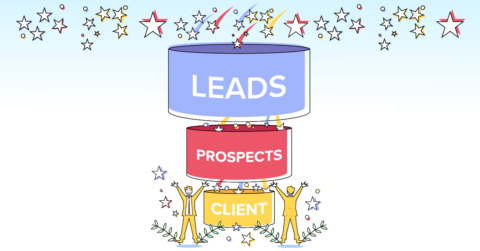
From Lúgh Pros #1: Google Ad Grants
12/05/23
From Lúgh Pros
For nonprofits that want to amplify their online presence and impact, Google Ad Grants is a vital tool. But what is it exactly, and how can you use it most effectively at your own nonprofit?
These are the questions we answer in our latest Ultimate Guide. We also go over some of our favorite resources for further education. Enjoy!
This is the first guide in our “From Lúgh Pros” series. In this series we not only educate you about topics important to nonprofits, but give you valuable insight from our team of industry experts!
- What Is Google Ad Grants?
- Why Is Google Ad Grants Important?
- How To Get Started
- 13 Tips For Using Google Ad Grants Effectively
- Recommended Resources
- Conclusion
What Is Google Ad Grants?
Google Ad Grants is an initiative by Google that allows eligible nonprofits to advertise for free on the Google Ads platform. With a cap of $10,000 a month, nonprofits have the power to broadcast their messages to a global audience. This significantly boosts their visibility and outreach efforts.
Of course, it’s important that nonprofits taking advantage of this budget run effective ads. This is exactly what we cover in our “13 Tips” section further down.
Why Is Google Ad Grants Important?
There are two reasons Google Ad Grants can be so important for nonprofits: visibility and targeting. Firstly, it gives nonprofits the ability to enhance their online presence without shouldering a substantial financial burden. This is essential, because many nonprofits don’t have a lot of extra cash to spend on advertising. This allows them to attract a larger audience to their website and foster engagement, further advancing their mission.
Secondly (and perhaps most importantly) Google Ad Grants allows targeted advertising. It’s not simply a case of throwing up an ad for anybody to see, but reaching people most likely to care about your cause. This can be powerful for a nonprofit that’s searching for the people most likely to donate to a campaign. It’s also a chance to attract more volunteers if a nonprofit needs them.
How To Get Started
The process for getting started with Google Ad Grants is quite simple. Here the few steps you need to go through if you’re ready to get started:
- Sign into Google for Nonprofits. If you don’t already have an account, you will need to make one.
- Click “Get Started” under Google Ad Grants.
- Enter the website that you plan on using, and click “Submit Website.”
- Watch the welcome video, and click the checkbox to confirm that you have.
- Click “Submit Activation Request” to submit your activation for review.
You will receive an email shortly after that with further instructions. The review process takes between 3-5 business days. After that you will receive information on whether you have been approved or not.
13 Tips For Using Google Ad Grants Effectively
Now that we know what Google Ad Grants is, why it’s important for nonprofits, and how you can get started, let’s dive into some of our best tips. All 13 tips you will read below are selected with one goal in mind: to make your Google Ad Grants campaigns as effective as possible.
As always, any single one will give you better results. That said, the more you try to act on these tips, the more success you will have!
1) Strategic Keyword Selection
First, as with all paid ads, it’s essential that you pick the correct keywords. You should begin the process with comprehensive keyword research. While there are plenty of tools you can use, Google Keyword Planner is a great place to start. You should be looking for keywords that are not only relevant to your campaign, but which can also be high-converting. Be sure to avoid single and overly generic keywords. Often, because of competition, the more specific the better!
2) Compelling Ad Copy
Just because your keywords are good doesn’t guarantee a quality ad. This is where effective copywriting comes in. The copy you use to create your ad (whether it’s the headline, video script, or ad text) should resonate emotionally with your audience. Try to highlight the tangible impact of supporting your nonprofit. This might include persuasive language or focusing on the urgency and importance of your cause. Even if you don’t do well on the rest of our tips, solid copy can save an ad.
3) Interesting Visuals
Of course, it’s not just words that are going to grab (and keep) somebody’s attention. You also need to consider the images that you use. Your visuals should evoke emotions from your ad viewers and tell a compelling visual story about your nonprofit’s impact. It’s worth your time to invest in high-quality and authentic visuals. You can also test different types of visuals. This might include photographs, infographics, or illustrations. This is all part of human psychology and the visuals that people naturally gravitate towards.
4) Geo Targeting
Creating ads with a “geo targeting” strategy essentially means showing different kinds of ads based on the location of the viewer. The goal is to be hyper-relevant to the people seeing your ads. As for how you do this? Be sure you are utilizing location-specific keywords and ad copy. Also consider the cultural nuances of different regions. This will help you tailor your messaging to diverse audiences and make adjustments based on data insights.
5) Optimized Landing Pages
For a seamless user experience, consider diving deep into landing page optimization. One of the most important things you can strive for is “alignment.” This means making the content and style of your landing pages similar to that of your ads. This means you must not only create a persuasive narrative with your ads, but ensure a smooth “user journey” through them. Also be sure to implement clear and compelling calls-to-action (CTAs) that lead to your landing pages. This brings me to my next point…
6) Extensive A/B Testing
A comprehensive A/B testing strategy will allow you to continually optimize your campaigns. This is the quickest way to ensure that you are constantly working towards an ad that performs well. Be sure that you are experimenting with different variations. This can include anything from your headline and ad copy, to visuals and calls-to-action. Be sure to implement A/B tests systematically, focusing on one variable at a time. This makes it easier to accurately identify the elements that contribute to campaign success.
7) Mobile Optimization
No surprise here. If you are doing anything online (ads included), mobile optimization should be a priority. There is a growing number of users accessing the internet via mobile devices, which means a large portion of people seeing your ad will be doing so on a phone. Mobile optimization requires a number of important steps. Optimize load times, streamline navigation, and test the mobile responsiveness of your campaigns to maximize engagement.
8) Regular Performance Analysis
You need a routine that ensures you are constantly checking your ads’ performance. This not only gives you the best chances for success across your ads, but will also give you actionable insights. Utilize Google Analytics (more information in tip #11) and Google Ads data to identify successful strategies and areas for improvement. This will allow you to get a baseline understanding of the kinds of numbers you should be shooting for. One thing we’ve learned, for example, is to aim for a minimum click-through-rate of 5%.
9) Conversion Tracking
Once you are regularly analyzing your performance, you will start improving your conversion tracking as well. This is essential for the success of your campaigns. It’s especially important for accounts created after 2018 or using “smart bidding” strategies. Of course, it’s important to be clear on what counts as a conversion. The most common conversion for a campaign using Google Ad Grants will be a donation. You might also consider signing a petition, joining an informative webinar, or deciding to volunteer. Regularly review conversion data to optimize your campaigns for maximum impact.
10) Ad Extensions
Ad extensions can provide additional context and drive further user interaction. You might consider experimenting with site link extensions to direct users to specific pages on your website. And if you do, try to use at least two of them. From our experience, this seems to be the sweet spot for best results. Regularly review and update your ad extensions to align with your campaign goals.
11) Google Analytics
Google Ad Grants functions much better when fully integrated with Google Analytics. That’s because GA gives you comprehensive insights into user behavior. It’s important, of course, that you know how to use the tool most effectively. Be sure that you set up goals and events in Google Analytics to track specific interactions on your website. This will give you insight into your audience, which allows you to make strategic decisions when adjusting your campaigns.
12) Dynamic Search Ads
Dynamic ads allow you to change the content of your ads based on the viewer. One example is allowing Google to dynamically generate a different headline based on a users’ search query. This not only enhances the relevancy of your ads, but makes you more efficient while creating them as well. Regularly review search terms reports so that you are able to stay on top of the overall effectiveness of your ads.
13) Ad Grants Policies Compliance
None of the above tips matter much if you aren’t compliant with Google’s policies. Violate any essential rules, and you risk having your account suspended. Regardless of what else you do, you need to ensure constant (and meticulous) compliance. Regularly review policy updates. Also be sure that you make any necessary adjustments to your campaigns to maintain eligibility to the program. One last important piece of information: compliance with the annual program survey is also mandatory. Click here for more information.
Recommended Resources
If you want to take full advantage of Google Ad Grants you need to stay informed. While our Ultimate Guide is a great place to start, further education is essential. With that in mind, we’ve gathered three additional resources you might consider checking out.
Google Ad Grants Help Center
While Google Ad Grants can be amazing for nonprofits, it’s not always “user friendly.” This is unavoidable. The fact is, it’s a huge program capable of running millions of dollars of ads daily, and the perceived complexity of the program reflects this.
Thankfully, the Help Center is always there to help. Here you will find a wealth of resources crafted by Google designed to guide you through Google Ad Grants. This includes everything from common tips to in-depth tutorials showing you the in’s and out’s of the program. Be sure to check it out if you are serious about making Google Ad Grants work for you.
Google Analytics Academy
While not strictly necessary to running effective ads, Google Analytics can certainly be helpful. Used right, the tool gives you valuable insight into your audience like few other tools can. Indeed, that’s why we recommend learning how to use Google Analytics effectively in our section on tips.
That said, the tool can seem quite complicated. With that in mind, the Academy is a great place to get started. Here you will find all the most important information you need to not only understand Google Analytics, but to use it most effectively.
Google For NonProfits YouTube Channel
If you are a visual learner, be sure to check out this YouTube channel. This is a dedicated space for all things related to Google Ad Grants.
While the channel is not always super active, there is a wealth of knowledge here for anybody working at a nonprofit. It’s also important to know that just watching a few of these videos can give you great ideas for your own Google Ad Grants campaigns!
Conclusion
Google Ad Grants is a great option for nonprofits that want to get into ads, but don’t necessarily have the budget for it. Take advantage of the program, and do it effectively, and a larger audience (and more donations) are yours for the taking.
Let us know if you have any questions. As the first topic in our “From Lúgh Pros” series, Google Ads Grants is a program we have extensive experience with!









